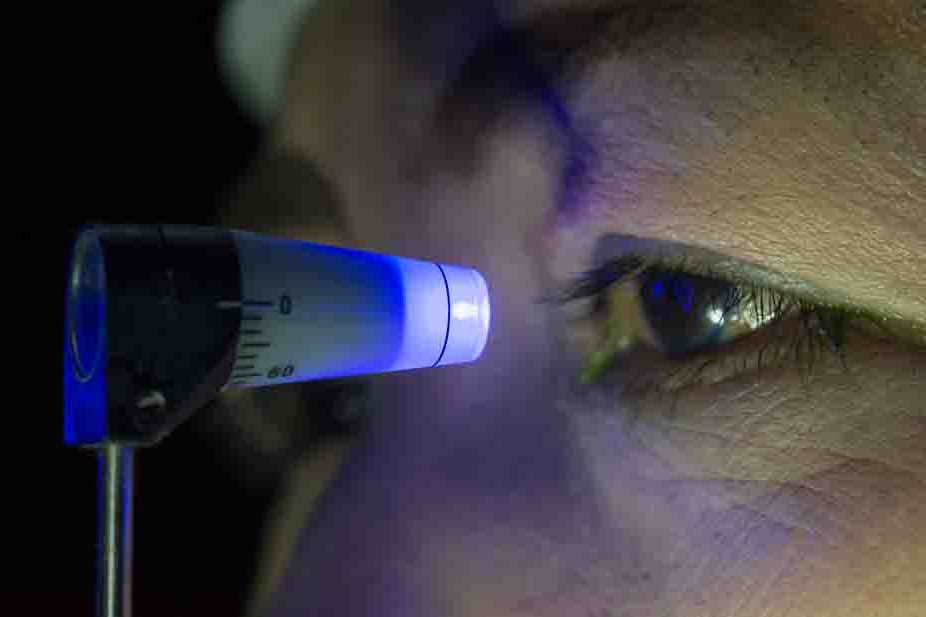
Cataract: symptoms, causes and intervention
A cataract is a clouding of the crystalline lens that leads to a progressive reduction in vision. It is a common cause of visual impairment: it occurs spontaneously in most elderly people (generally after the age of 65)
It can be due to factors such as diabetes, cortisone use, eye trauma, a hereditary predisposition or prolonged and unprotected exposure to sunlight.
It can only be treated surgically.
What are the misconceptions? It is not true that cataract
- is a film that covers the eye;
- is caused by excessive eye fatigue;
- it passes from one eye to the other;
- it causes irreversible blindness;
- it must be complete or ‘mature’ in order to be removed.
The most common symptoms of cataract include:
- painless blurring of vision;
- sensitivity to light;
- need for frequent lens changes (myopes);
- double vision in one eye;
- need for brighter light for reading;
- poor night vision;
- reduced perception of colours, which appear more yellowish.
How does it develop?
The amount and pattern of clouding of the crystalline lens can vary.
If the clouding does not appear near the centre of the lens, the presence of a cataract may even go unnoticed.
The speed at which a cataract develops depends on the individual and can even vary from eye to eye.
It is therefore not possible to predict exactly how fast it will grow. Usually, however, cataracts progress gradually over the years.
Cataracts, how is it treated?
There are no medicines, food supplements, exercises or optical instruments that can prevent or cure cataracts.
Surgery is currently the only method available to remove it.
However, if the decrease in vision caused by cataracts is not important, replacing spectacle lenses can improve vision.
In addition, protection against excessive sunlight (UV rays) can help prevent or slow down the progression of cataracts.
When should surgery be performed?
Surgery must be considered when the cataract causes sufficient loss of vision to impair safety in daily activities, but it is usually the patient who must say whether his or her visual capacity has become insufficient to perform his or her job or to drive a car without danger, or to read or watch television without fatigue.
Depending on the symptoms, the patient and the ophthalmologist decide together on the most appropriate time for surgery.
What are the expected results of surgery?
In Italy, more than 300,000 people undergo cataract surgery every year, and 95 per cent of these operations are uncomplicated.
Cataract surgery has a high success rate: vision improves in over 90% of cases, unless there are problems related to the cornea, retina or optic nerve.
Already from the first postoperative day, a sufficiently good vision is obtained.
Cataract, pre-surgery exams
- Ophthalmological evaluation (collection of anamnesis, complete visit, ecobiometry, acquisition of informed consent to the intervention);
- ECG;
- standard laboratory tests (blood urea nitrogen, creatinine, blood glucose, ESR, complete blood count, PT, PTT, AST, ALT, CPK, electrolytes, cholinesterase);
- urine test;
- anaesthesiological visit (possible request for further tests).
How is the surgery performed?
With this delicate microsurgery, normally performed under local anesthesia and without the need for hospitalization (in day hospital), the opacified lens is removed and an artificial lens (IOL) is inserted in its place.
The artificial lens is made of plastic or silicone and is inserted through a very small incision (up to 3 mm).
This new lens is not visible after surgery, because it is positioned behind the iris and the micro-incision is sealed with very fine sutures or without stitches, and can remain in the eye for life without problems.
Since the artificial lens is usually unable to focus on objects at different distances, the distance at which the best view will be obtained after surgery is decided together with the surgeon.
What should be done after surgery?
After cataract surgery, it is possible to immediately devote oneself to normal daily activities, avoiding the more strenuous ones.
However, it is necessary to avoid contact with external substances such as shampoo and above all not to rub the operated eye.
You should use the eye drops indicated by your doctor.
Post-operative visits will also be necessary, to verify the improvement of the eye during the convalescence.
When can you consider yourself recovered from a cataract operation?
The definitive stability of vision corresponds to the complete healing of the wound, which normally occurs in 1-2 months.
A slight distance correction may be required, in addition to reading glasses.
However, it is important to be aware that complications may arise during and after surgery, and that some of them, although rare, can irreparably reduce vision.
In some cases, for example, the natural capsule that supports the artificial lens becomes clouded after surgery (secondary cataract) and it is necessary to open it using laser surgery (Nd:YAG).
Even if it is obtained frequently, the success of the operation cannot be guaranteed, as in any other surgery.
Read Also:
Emergency Live Even More…Live: Download The New Free App Of Your Newspaper For IOS And Android
Inflammations Of The Eye: Uveitis
Corneal Keratoconus, Corneal Cross-Linking UVA Treatment
Myopia: What It Is And How To Treat It
Presbyopia: What Are The Symptoms And How To Correct It
Nearsightedness: What It Myopia And How To Correct It
Blepharoptosis: Getting To Know Eyelid Drooping
Lazy Eye: How To Recognise And Treat Amblyopia?
What Is Presbyopia And When Does It Occur?
Presbyopia: An Age-Related Visual Disorder
Blepharoptosis: Getting To Know Eyelid Drooping
Rare Diseases: Von Hippel-Lindau Syndrome
Rare Diseases: Septo-Optic Dysplasia
Diseases Of The Cornea: Keratitis
Source:
Eye Health And Eyes Disorders: Signs Not To Be Underestimated


